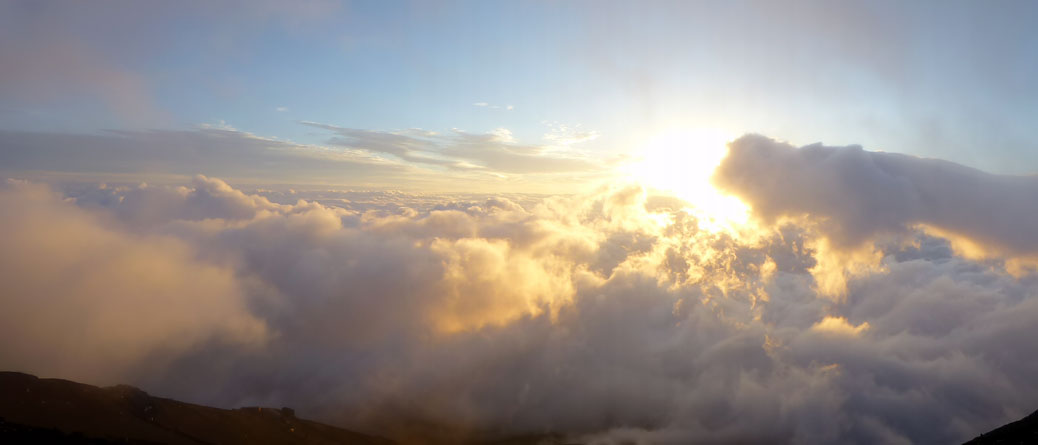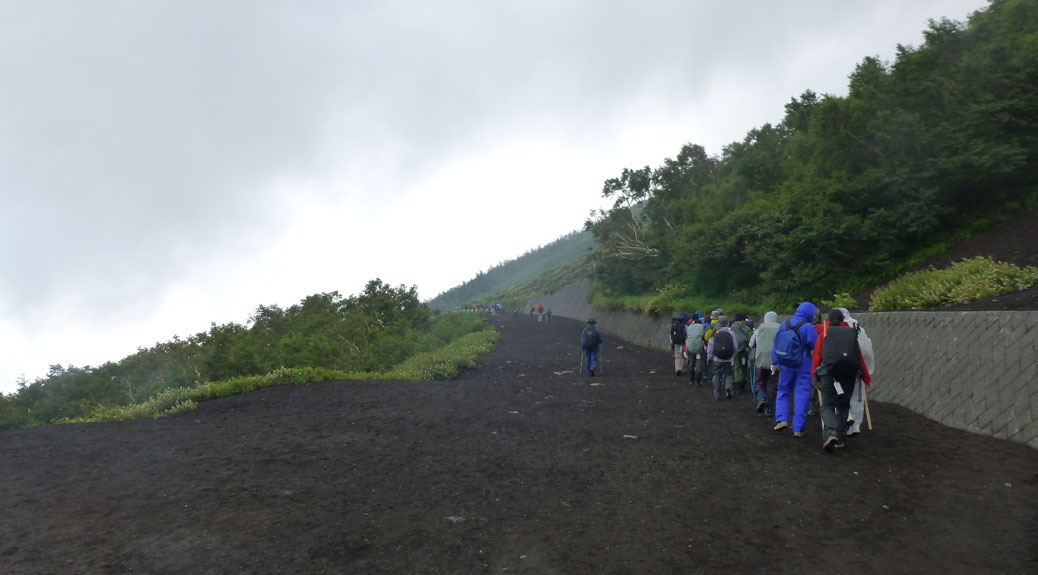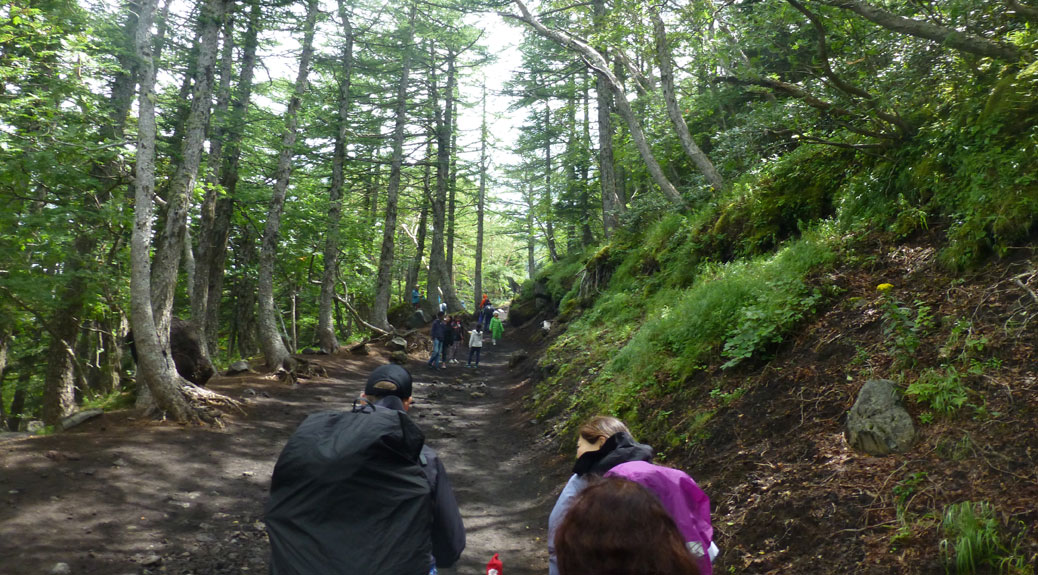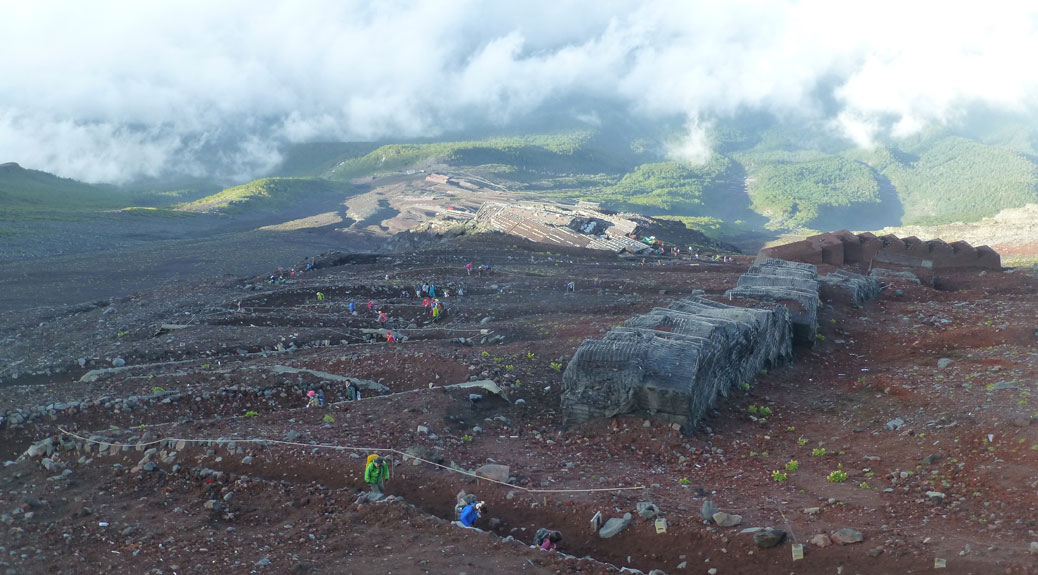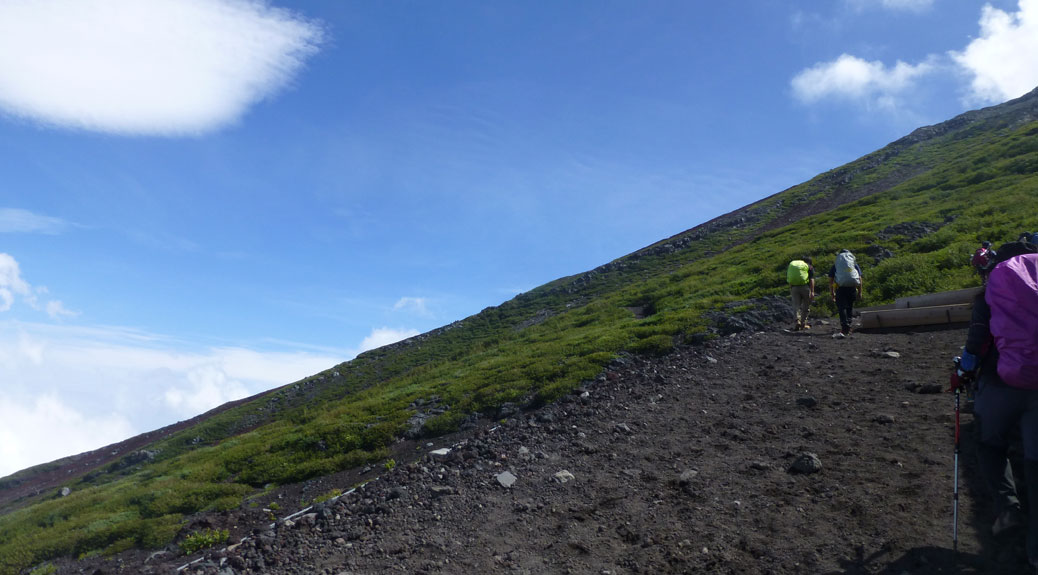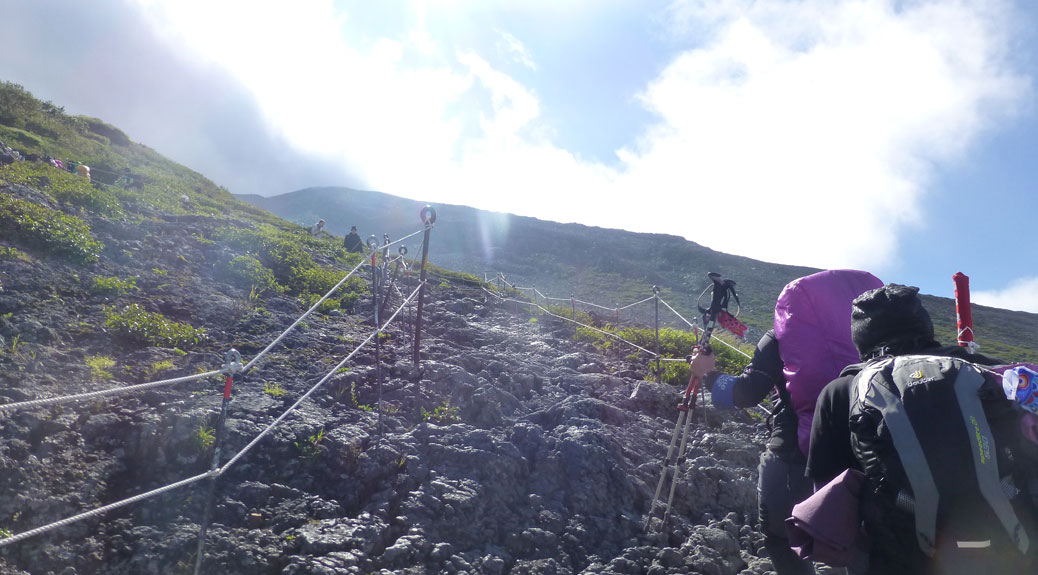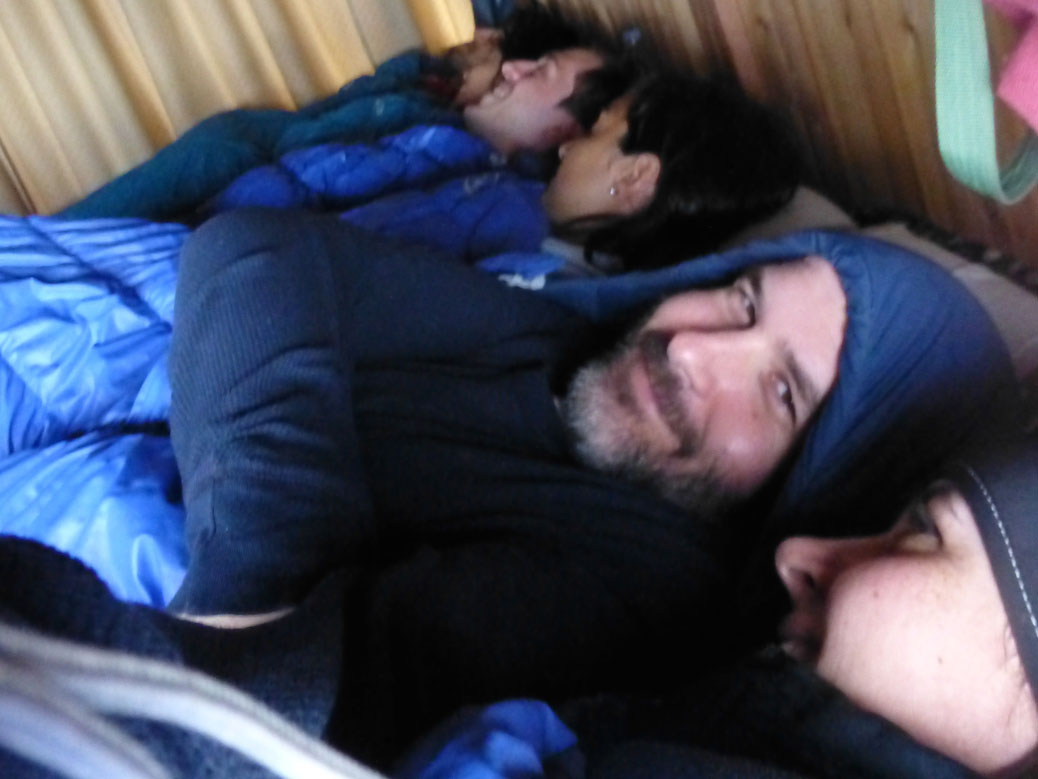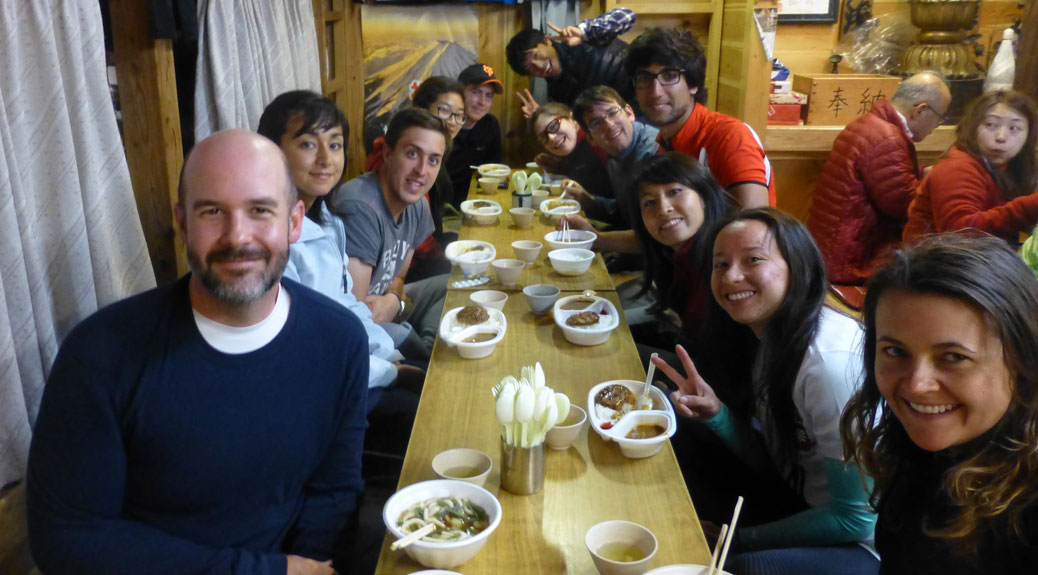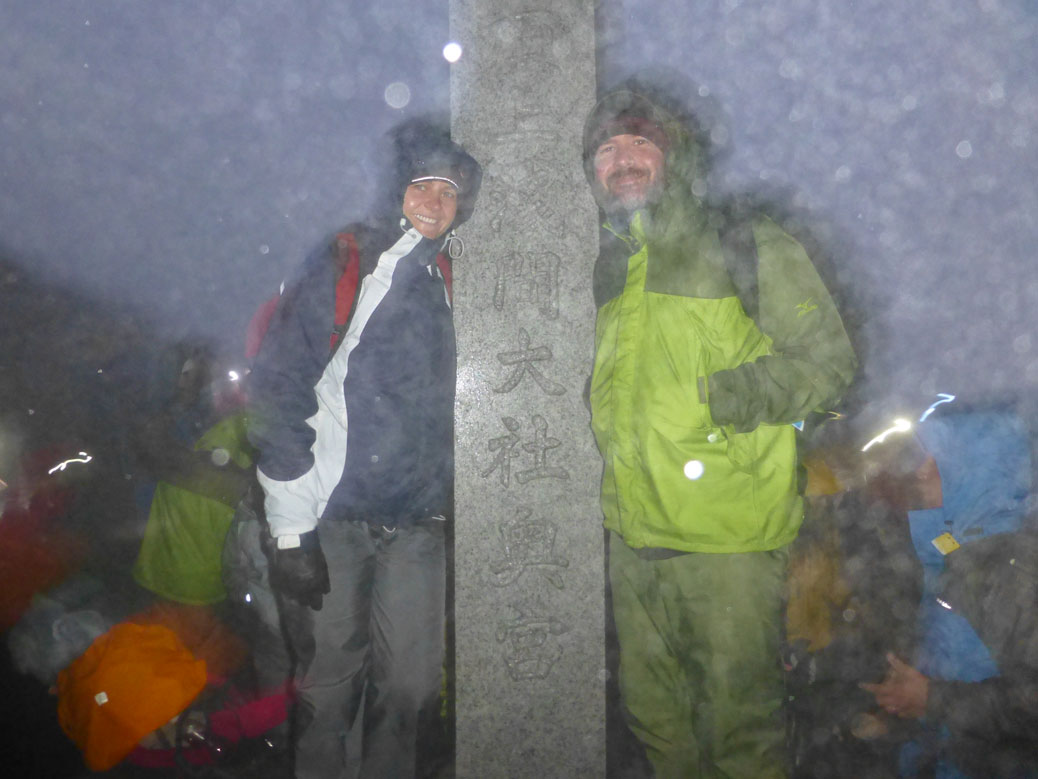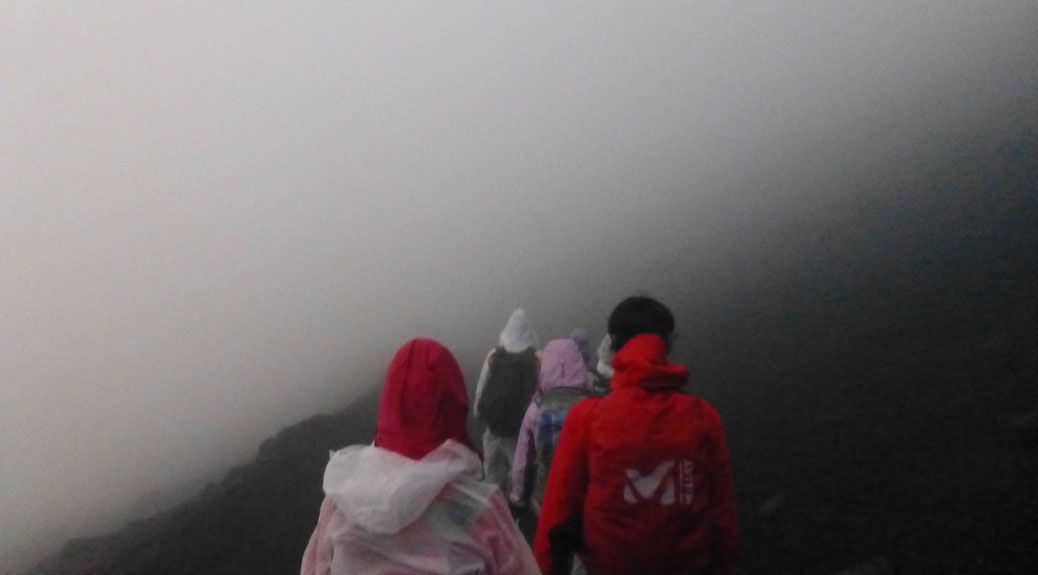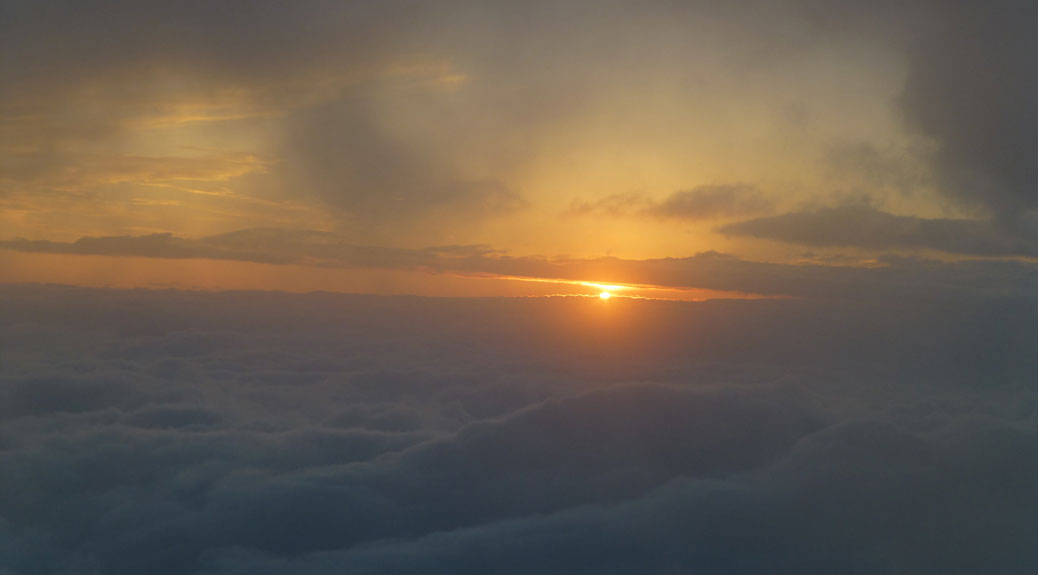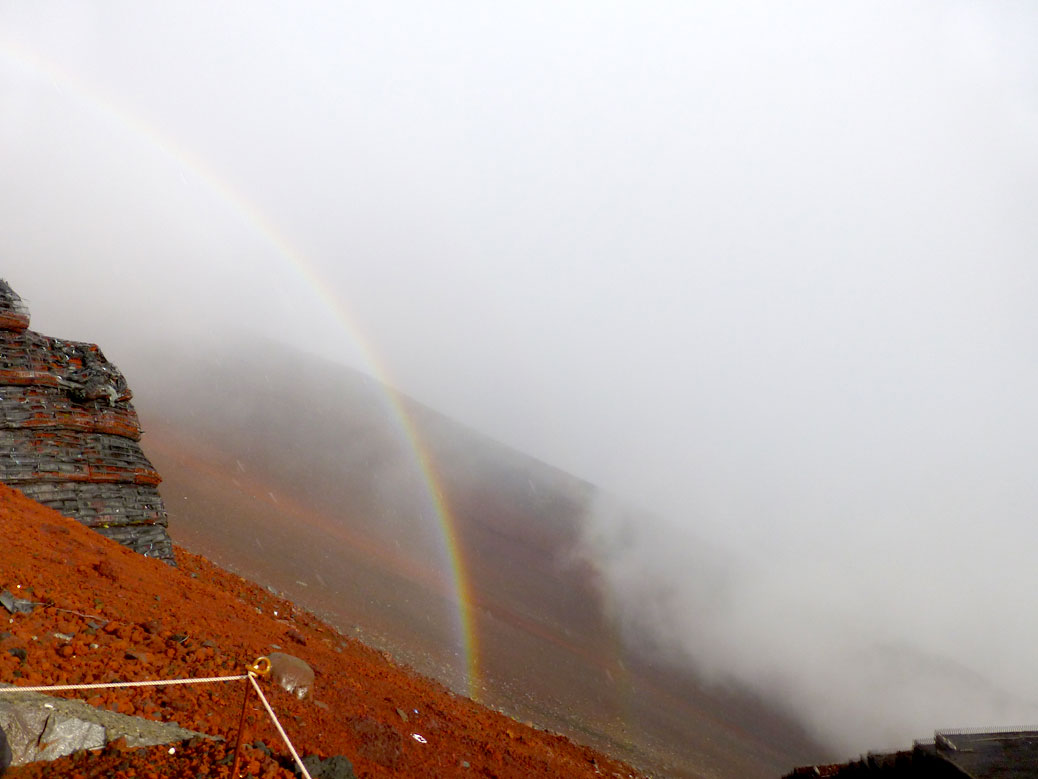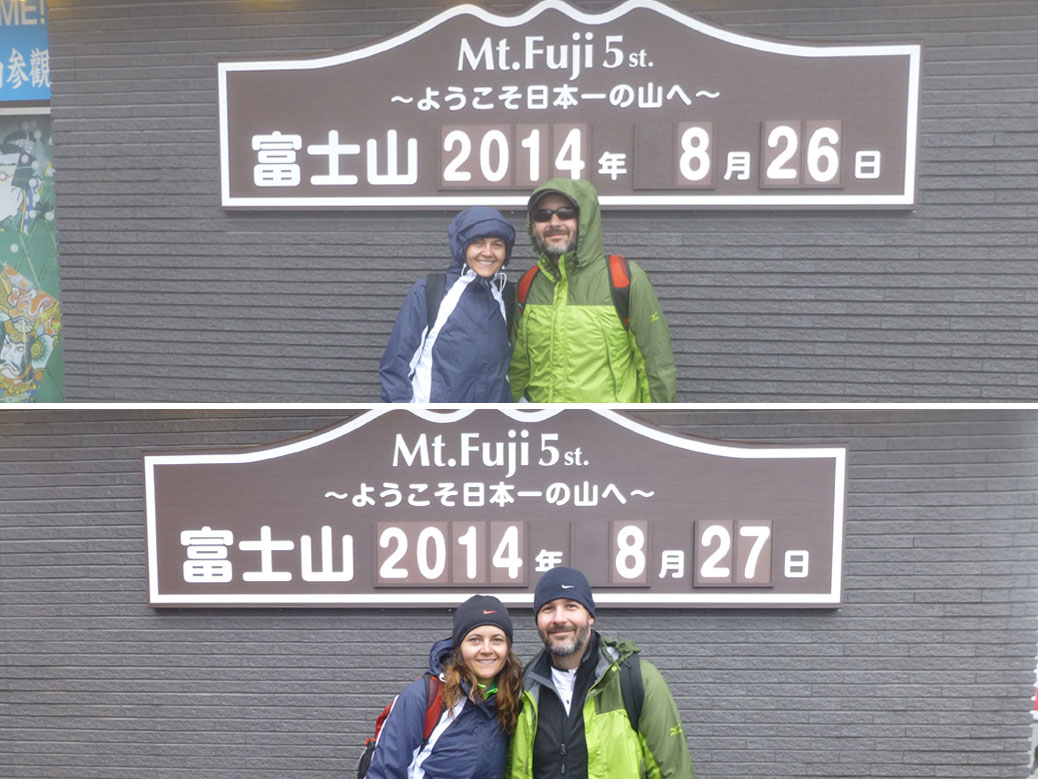Reaching the summit of Japan’s iconic Mount Fuji is often on the short list of activities for visitors, but few realize the small window of opportunity for novice climbers. At more than 12,000 feet of elevation, the terrain is only passable for about 8-10 weeks from mid-July to early-September.

Reaching the Top
The top of Japan’s tallest peak can be reached a few different ways, but most climbers attempt to arrive at the summit for the sunrise. Arriving by 4:30 a.m. requires climbing during the middle of the night. While it’s possible to make all of the arrangements yourself, it’s much simpler to book a tour through one of the many companies leading both local and foreign visitors to the top.
We made our summit in August 2014 and chose Willer Express as our travel company. With daily tours departing from near Tokyo’s Shinjuku Station, Willer Express provides bus transportation to and from Fuji’s 5th Station, an English-speaking guide, mountain hut lodging at the 8th Station, three meals and a visit to an onsen (hot springs).
Gear Up
With the 90ºF temperatures of the Tokyo summer, it’s hard to imagine you could be fighting off hypothermia less than 24 hours later. Having the right gear may be the most important consideration in making the climb an enjoyable experience.
Most tour companies offer an affordable gear package, which can be convenient for novice climbers or those traveling light. If you bring your own gear, consider the following items at a minimum:
Lightweight daypack with rain cover. Bring a bag just large enough to carry your gear. From Tokyo to Fuji’s summit, you’ll experience a 40-60ºF decrease in temperature, so you’ll need to be able to swap gear on and off along the way.
Waterproof jacket and pants. When it rains, it pours. Literally. On our summit, it started raining about 20 minutes before we reached the mountain hut at Station 8. By the time we arrived, we were soaked to the bone, even with our rain gear. Hut employees won’t allow you inside until you are dry and will greet you with leaf blowers and towels to keep the rainwater outside.
Waterproof hiking boots/shoes. With the steep ascent and descent, you’ll want properly-fitting hiking shoes with good traction. I’d recommend buying these beforehand and testing them in the wild rather than renting an ill-fitting pair of shoes on the morning of the climb. A pair of gaiters isn’t a terrible idea either to keep rain from entering via the tops of your shoes.
Cold-weather clothing. Poor clothing choices are one of the most common mistakes made by Fuji first-timers. Average temperatures at the summit are around 40ºF, but can feel much closer to freezing due to wind chill and the aforementioned rain. Dress in layers so you can add and remove as needed during the climb.

Hiking poles. Poles aren’t necessary for the ascent, but will come in handy on the long, steep descent. You can purchase a souvenir wooden pole and can have it stamped at each of Fuji’s stations to mark your progress. Make sure you have gloves if you choose the wooden pole as it’s more for looks than utility.
Hats. You’ll be climbing both in the sun during the day and in the cold at night. Consider a brimmed hat for keeping the sun away and a hat that will cover your ears for early-morning climbing.
Gloves. Bring warm, durable, waterproof gloves with good grip. I had warm gloves, but once they were wet, they were no longer warm. You’ll also be using your hands a lot near the final ascent to the summit, so they’ll need to stand up to sharp rocks.

Headlamp. You’ll need your hands free to navigate the rocks near the summit, making a headlamp a better choice than a handheld flashlight. One of my favorite sights was waking up at the mountain hut at 1:30 a.m. and seeing the endless headlamps coming up the trail behind us.
Sunglasses/sunscreen. Fuji is exposed to all the elements, especially the sun. Bring a good quality sunscreen and UV-blocking sunglasses.
Water and snacks. Our tour company recommended three liters of water per person for the entirity of the climb. You can carry it all with you or bring one and purchase additional bottles at stations along the way. While it’s more economical to bring your own, it might be worth the extra yen to lighten your load.
Change of clothes. Bring a change of clothing and shoes, especially if you choose a package that ends with an onsen visit. The ride back to Tokyo will be much more pleasant in a clean outfit.
Japanese yen. Mount Fuji is one of the few places in Japan where you’ll find pay toilets. At 200-300 yen ($2-3 USD) per turn, you’ll want to budget accordingly. You can also buy additional water, snacks and gear at each of the stations. Japan is a very cash-oriented society, so carrying large amounts of money is not unusual.
Camera and extra batteries. The views on the mountain are breathtaking and you’ll have plenty of opportunities to take photos. I don’t recall electrical outlets in the mountain hut, so make sure you have extra batteries or a portable charger.
Extras. If you are prone to elevation sickness, oxygen canisters can be purchased along the way, but you might consider bringing one with you in case canisters are sold out. In our group, the first case of elevation sickness from the thin air showed up around the 7th Station.

Tips
Stash your extra clothes, shoes and gear at the 5th Station. There are coin lockers at the 5th Station. I wish I’d stashed a complete set of dry clothes, including shoes, in one of those lockers. While the onsen was great, it was awful having to put wet clothes on afterward. It’s also a cheap way to lighten your load up the mountain.
Take the tour. Definitely spring for the tour company (we used Willer Express and would recommend them again) and take them up on their entire rental package. Mountain hut reservations often fill up quickly, but the tour companies have standing reservations.
Prepare for the rain and cold. I had a base layer, cotton shirt, DriFit pullover, fleece jacket and rain jacket and my teeth were still chattering at the summit. My gloves were soaked and freezing. My two layers of socks were the only thing standing between my toes and frostbite. Choose layering clothes as the temperature difference between the 5th Station and the summit is pretty extreme.
Check the calendar. The climbing season is short. If you’re planning to climb Fuji, make sure to schedule your trip between early July and mid-September. While you can still climb in the off-season, shops and huts are closed and trails are not maintained and the ascent can be dangerous for inexperienced climbers.


